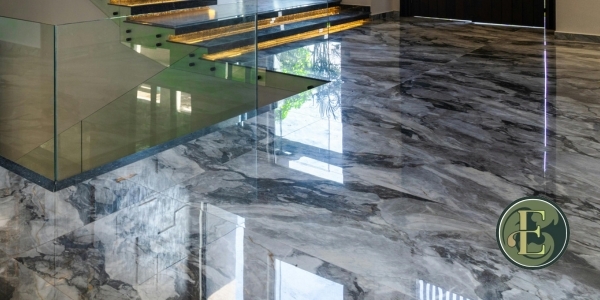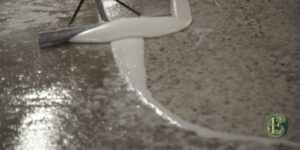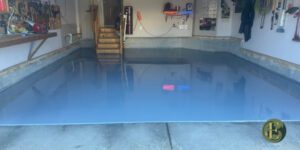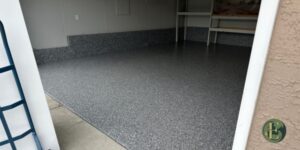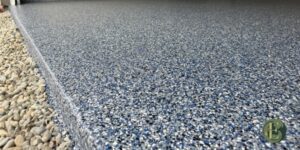Metallic epoxy flooring has surged in popularity among Calgary’s residential and commercial property owners due to its stunning, three-dimensional metallic sheen and durable surface. However, beneath its high-gloss and luxurious appearance lie several technical challenges that can undermine the floor’s longevity and aesthetics if not proactively addressed. At Elegant Coatings, we understand the unique environmental stresses Calgary’s climate imposes on flooring and have perfected systems to overcome these challenges while delivering flawless metallic epoxy floors.
In this blog, we detail the three most common issues affecting metallic epoxy flooring—clear coat scratches, surface preparation failures, and adhesion problems—and how expert installation coupled with proper maintenance can prevent costly failures. This knowledge base is critical for property owners seeking not just a show-stopping floor but a resilient investment.
1. Clear Coat Scratches: Identifying and Mitigating Surface Abrasion
Due to its ultra-smooth, high-gloss finish, metallic epoxy flooring is notably susceptible to surface scratches. The clear topcoat that protects the metallic pigments is often the most vulnerable layer, showing fine scratches caused by abrasive foot traffic, dragging equipment, or improper cleaning methods. According to industry sources, the transparent nature of this clear coat means any disturbance to the surface is highly visible, even minor blemishes stand out prominently.
Technical Causes:
-
Abrasive particles trapped beneath footwear or wheels.
-
Frequent movement of heavy machinery on floors without protective matting.
-
Use of harsh cleaning products that degrade the topcoat.
Solutions:
-
Use of premium clear coats with enhanced scratch resistance is essential. Polyurethane or polyaspartic topcoats applied in multiple layers can significantly increase scratch resistance.
-
Incorporate epoxy floors with slight anti-slip additives to minimize micro-abrasive wear.
-
Educate clients on correct maintenance protocols, such as avoiding harsh chemicals and using soft cleaning tools.
-
Periodic professional buffing and reapplication of a clear coat can restore shine and repair minor scratches effectively.
In Calgary’s commercial spaces, foot traffic can exceed thousands daily, amplifying these risks without proper safeguards. Elegant Coatings applies advanced formulations optimized for local conditions, ensuring a durable finish that preserves the metallic brilliance while safeguarding against abrasions.
2. Surface Preparation: The Hidden Key to Adhesion and Longevity
One of the most overlooked yet critical factors in metallic epoxy flooring success is surface preparation. The floor substrate, typically concrete, must be meticulously prepared to ensure the epoxy bonds effectively. Calgary’s climate—including freeze-thaw cycles and seasonal moisture variation—can exacerbate substrate imperfections and moisture intrusion, which, if untreated, will compromise adhesion, causing flaking or peeling.
Surface Prep Challenges:
-
Residual dust, oils, or contaminants inhibit epoxy bonding.
-
Moisture vapor emission from concrete slabs can cause bubbling or lifting.
-
Concrete cracks and surface irregularities become visible through the clear epoxy, especially with metallic epoxy which is less forgiving visually.
Best Practices:
-
Use mechanical grinding and shot blasting to expose an open, porous concrete surface suitable for epoxy absorption.
-
Conduct moisture tests (e.g., calcium chloride tests or relative humidity probes) to assess slab readiness; treat moisture issues pre-emptively.
-
Repair and fill cracks with epoxy-compatible fillers before coating.
-
Implement a primer coat designed for high adhesion to seal and promote bonding.
State-of-the-art moisture mitigation systems and thorough surface prep extend the lifespan of metallic epoxy floors dramatically. Calgary’s alkaline soil and winter salt applications make moisture management a top priority for Elegant Coatings’ specialists.
3. Adhesion Problems: Preventing Peeling, Chipping, and Delamination
Poor adhesion remains a primary failure mode for epoxy floors, including metallic systems. Unlike traditional epoxy, metallic epoxy has a thinner clear coat layer sensitive to substrate conditions; any lapse in preparation or application conditions can trigger peeling, chipping, and delamination.
Causes of Adhesion Failure:
-
Incompatibility between epoxy products and concrete condition.
-
Application under wrong environmental conditions: temperatures outside 21-27°C (70-80°F) or high humidity.
-
Improper mixing ratios leading to incomplete curing.
Recommendations:
-
Always follow exact manufacturer mixing specifications.
-
Control ambient temperature and humidity during application; Calgary seasonal extremes necessitate scheduling installations in optimal temperature windows or using climate-controlled areas.
-
Employ quality assurance tests post-application like cross-cut adhesion testing.
-
Use epoxy systems engineered for superior substrate penetration and bonding.
Failures due to poor adhesion are often expensive to fix—requiring complete removal and re-installation. Elegant Coatings maintains rigorous quality control and uses best-in-class industrial formulations engineered for Calgary’s challenging environment, ensuring flawless adhesion for years.
Calgary-Specific Insights and Local Expertise
-
Calgary has approximately 1.3 million residents and a strong commercial sector frequently choosing epoxy flooring for durability and aesthetics in retail, offices, and hospitality. According to the City of Calgary’s economic data, commercial property owners invest heavily in high-performance flooring to minimize downtime and maintenance costs.
-
The harsh winters, with nearly 130 freeze-thaw days annually, elevate the risk of substrate moisture issues leading to epoxy failures—making expert surface moisture mitigation especially critical.
-
Traffic intensity on commercial floors in Calgary can reach up to 40,000 foot visits per month in high-traffic venues; selection of scratch-resistant coatings tailored for such usage is a must (industry average estimates).
Final Thoughts: Trust Elegant Coatings for Expert Metallic Epoxy Flooring Solutions
While metallic epoxy flooring offers a stunning visual effect unmatched by other floors, only expert knowledge and meticulous application ensure it delivers long-term value free of common pitfalls like clear coat scratches, poor adhesion, and surface prep failures.
At Elegant Coatings, we blend artistry and science with expert technical insight to provide Calgary homes and businesses with metallic epoxy floors that remain vibrant and durable for years. From detailed substrate assessment, moisture control, to state-of-the-art topcoats, our precision enhances floor performance tailored to Calgary’s demanding conditions.
If you want a metallic epoxy floor that not only wows visually but outperforms practically, contact Elegant Coatings today. Our proven methods and trusted products protect your investment and elevate your space with floors that truly shine.
FAQs
-
What is the typical lifespan of metallic epoxy flooring in commercial Calgary environments?
Properly installed and maintained metallic epoxy flooring can last over 10-15 years in Calgary’s commercial settings, factoring in local freeze-thaw cycles and traffic loads. Regular maintenance and professional recoating enhance longevity beyond a decade. -
How does metallic epoxy flooring compare environmentally to other flooring options?
Metallic epoxy floors are a low-VOC (volatile organic compounds) option, contributing to better indoor air quality compared to many traditional flooring materials. Their durability reduces replacement frequency, minimizing waste over time. -
Can Elegant Coatings customize metallic epoxy flooring designs to fit unique commercial branding?
Yes, Elegant Coatings offers tailored metallic epoxy flooring solutions that incorporate custom colors, logos, and metallic pigment patterns to reinforce branding and unique aesthetics, enhancing customer experience and business identity locally in Calgary. -
What ongoing maintenance does Elegant Coatings recommend to preserve scratch resistance in metallic epoxy flooring?
Elegant Coatings advises regular gentle cleaning with non-abrasive products, avoiding harsh chemicals, and professional clear coat touch-ups every few years to maintain scratch resistance and the floor’s high-gloss finish. -
Are metallic epoxy floors suitable for outdoor Calgary conditions, given the extreme weather?
Generally, metallic epoxy flooring is best suited for interior applications due to its sensitivity to UV exposure, but Elegant Coatings can recommend alternative epoxy or polyaspartic coatings designed specifically for exterior durability in Calgary’s climate.
People Also Ask
-
How quickly can metallic epoxy flooring be installed in a busy commercial space?
Installation typically takes 2-4 days depending on surface preparation and curing, minimizing downtime for businesses in Calgary. -
What safety features does metallic epoxy flooring provide?
Metallic epoxy floors can be treated with anti-slip additives ensuring safety compliance in high-traffic areas without compromising their glossy appearance. -
Is metallic epoxy flooring resistant to chemical spills common in industrial settings?
Yes, metallic epoxy flooring offers excellent chemical resistance, protecting floors from stains and damage from oils, solvents, and cleaning agents. -
Can metallic epoxy flooring be repaired if damaged?
Minor damages like chips and cracks can be repaired with epoxy fillers, while larger issues may require professional resurfacing. Elegant Coatings offers expert repair services. -
What is the curing time before metallic epoxy flooring can handle heavy traffic?
Typically, metallic epoxy floors require about 72 hours to cure fully before bearing heavy foot or machinery traffic.

